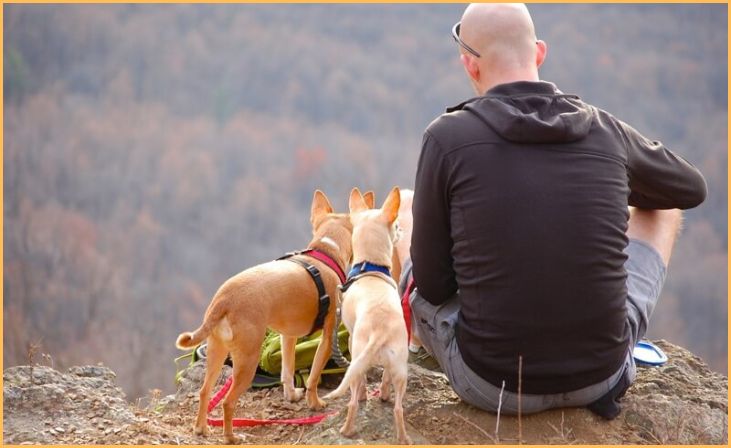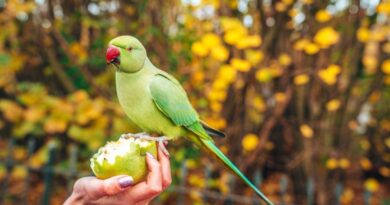Embarking on the journey of puppy parenthood comes with the joy of nurturing a playful bundle of energy. In our blog, “5 Best Exercises That Your Puppy Needs,” we delve into the essential activities that go beyond playtime, ensuring your furry friend thrives physically and mentally. From interactive games that strengthen the bond between you and your pup to purposeful exercises that promote agility and coordination, this guide unveils a holistic approach to puppy fitness.
Whether it’s engaging in structured training sessions or incorporating stimulating outdoor adventures, these exercises cater to your puppy’s developmental needs, fostering a happy and healthy start to their journey. Join us in discovering the dynamic ways to keep your puppy active, engaged, and on the path to a vibrant, well-balanced life.
Best Exercises That Your Puppy Needs
1. Interactive Playtime

Interactive play is more than just a fun bonding activity; it’s a cornerstone of your puppy’s developmental journey. Engaging in games like tug-of-war, fetch, or hide-and-seek stimulates their natural instincts and provides an outlet for their boundless energy. Ensure the toys used are suitable for your puppy’s age and size to avoid any potential hazards. Interactive play not only promotes physical exercise but also strengthens the bond between you and your pup, fostering a relationship built on trust and companionship.
For More- The 8 Most Popular Types of Shepherds
2. Structured Training Sessions
Incorporating structured training sessions into your puppy’s routine is a holistic approach to their overall well-being. Basic commands such as sit, stay, and recall not only establish a foundation for good behavior but also engage your puppy’s mental faculties. Use positive reinforcement techniques like treats and praise to make learning enjoyable. These sessions not only instill discipline but also provide mental stimulation, preventing boredom and the development of undesirable behaviors. Consistency is key, so aim for short, frequent training sessions to keep your puppy’s attention and make the learning process enjoyable.
3. Purposeful Outdoor Adventures

Puppies thrive in the great outdoors, and purposeful outdoor adventures cater to their innate curiosity and love for exploration. Take your puppy for leashed walks in safe environments, allowing them to experience new sights, smells, and sounds. This exposure contributes to their socialization, helping them grow into well-adjusted adults. If your puppy has completed their vaccinations, consider introducing them to puppy-friendly parks or nature trails. Outdoor adventures not only provide physical exercise but also contribute to a well-rounded and confident personality.
4. Brain-Boosting Puzzle Games
A mentally stimulated puppy is a happy puppy. Incorporate brain-boosting puzzle games into your daily routine to challenge your pup’s cognitive abilities. Puzzle toys that dispense treats or require problem-solving engage their minds and prevent boredom. These games are especially beneficial for breeds known for their intelligence and those prone to excessive chewing or digging. Introduce a variety of puzzles to keep things interesting and adjust the difficulty level as your puppy grows. Not only does this type of exercise tire out your puppy mentally, but it also contributes to a more content and satisfied companion.
5. Gentle Agility Training

While vigorous exercise is not recommended for developing puppy joints, gentle agility training can provide physical exercise and mental stimulation. Set up a puppy-friendly agility course using low obstacles, tunnels, and weave poles. This type of activity enhances your puppy’s coordination, balance, and confidence. Ensure that the agility equipment is appropriately sized for your puppy and that the activities are low-impact to prevent injuries. Agility training not only contributes to your pup’s physical development but also builds their self-assurance and strengthens the bond between you and your furry friend.
Tips for Successful Puppy Exercise
Now that we’ve explored the five best exercises for your puppy, let’s delve into some essential tips to ensure a successful and enjoyable exercise routine:
1. Age-Appropriate Exercises: Tailor exercises to your puppy’s age and breed. Younger puppies have different exercise needs than older ones, and small breeds may require different activities than larger breeds.
2. Consistency is Key: Establish a consistent exercise routine. Puppies thrive on routine, and regular exercise helps burn off excess energy and prevents behavioral issues.
3. Watch for Signs of Fatigue: Puppies are full of energy, but it’s crucial to recognize signs of fatigue. If your puppy starts to lag behind, pant excessively, or show signs of distress, it’s time to take a break.
4. Positive Reinforcement: Use positive reinforcement techniques during exercise and training. Praise, treats, and affection motivate your puppy and create a positive association with physical activity.
5. Vet Check: Before starting any new exercise regimen, consult with your veterinarian to ensure your puppy is in good health and that the chosen activities are suitable for their age and breed.
6. Adjust Intensity as Your Puppy Grows: As your puppy grows, adjust the intensity and duration of exercises. What may be appropriate for a three-month-old may not suit a six-month-old, so be attentive to your puppy’s changing needs.
Also Read- How to Stop Puppy Food Aggression: A Comprehensive Guide
Conclusion
In the journey of raising a happy and healthy puppy, incorporating these five best exercises is a surefire way to promote optimal growth and well-being. From interactive playtime to brain-boosting puzzles, each activity contributes uniquely to your puppy’s physical and mental development. Remember, the key lies in creating a balanced routine that aligns with your puppy’s age, breed, and individual needs. As you embark on this exciting adventure, savor the joy of watching your puppy thrive through purposeful exercise, forming the foundation for a vibrant and well-rounded life together.
FAQs
The amount of exercise your puppy needs varies based on factors such as age, breed, and individual energy levels. Generally, aim for 5-10 minutes of exercise per month of age, up to twice a day. Consult your veterinarian for personalized recommendations.
While gentle agility training can be introduced to puppies, it’s essential to wait until their joints are fully developed. Begin with low-impact activities and introduce agility elements gradually as your puppy grows. Always consult with your vet to ensure the safety of such activities.
A well-exercised puppy will display contentment, improved behavior, and reduced instances of boredom-induced behaviors like chewing or digging. Additionally, a tired puppy may show signs of relaxation, such as lying down or calmly observing their surroundings. Adjust the exercise routine based on your puppy’s individual needs and energy levels.







